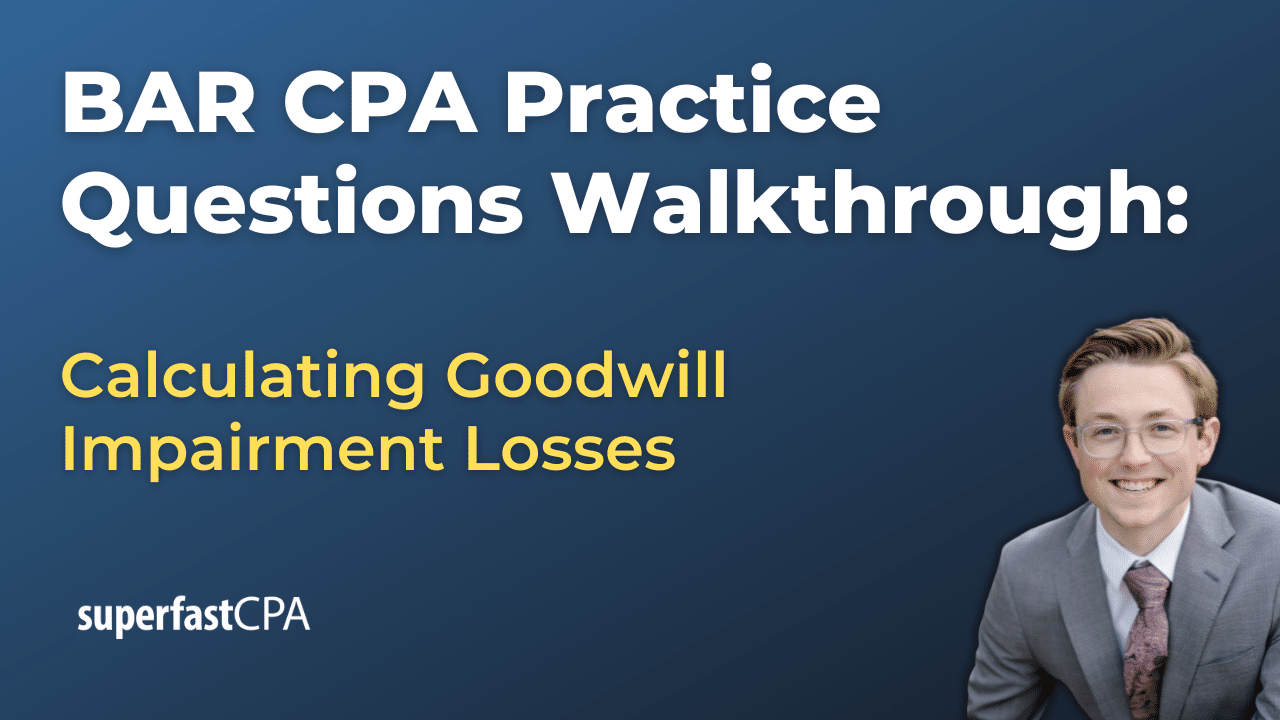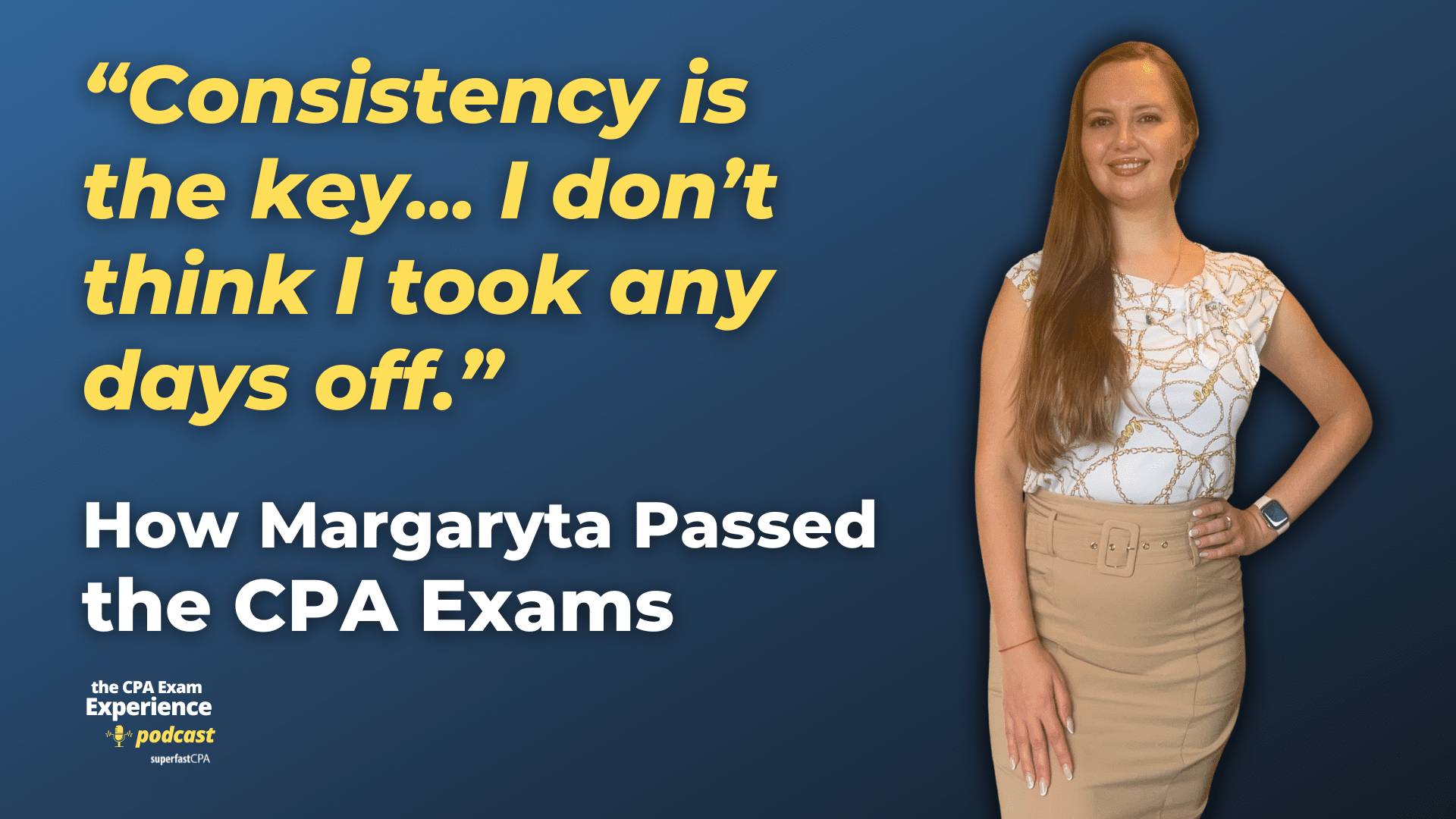Introduction
Brief Overview of Asset Retirement Obligations (AROs)
In this article, we’ll cover how to calculate assets and liabilities from asset retirement obligations. Asset Retirement Obligations (AROs) are legal obligations associated with the retirement of tangible long-lived assets. These obligations arise from laws, regulations, or contracts that require an entity to remove, dismantle, or restore a physical asset at the end of its useful life. Common examples of AROs include the decommissioning of nuclear power plants, closure of mining operations, dismantling of offshore oil rigs, and environmental cleanup of industrial sites. The recognition of these obligations ensures that the costs associated with asset retirement are accounted for in the financial statements, reflecting the true economic impact of these activities.
Importance of Accurately Calculating AROs
Accurate calculation of AROs is crucial for several reasons:
- Financial Accuracy: Properly accounting for AROs ensures that the financial statements reflect the true economic liabilities of an organization. This accuracy is essential for stakeholders, including investors, creditors, and regulatory bodies, to make informed decisions.
- Compliance: Adhering to accounting standards and regulations is necessary to maintain compliance and avoid potential legal and financial penalties. Accurate ARO calculations help ensure that an organization meets its legal obligations.
- Cost Management: Understanding and accurately estimating the costs associated with asset retirement allows for better financial planning and resource allocation. Organizations can set aside the necessary funds to cover future retirement costs, reducing the risk of financial shortfalls.
- Transparency: Clear and precise ARO calculations enhance the transparency of financial reporting. This transparency builds trust with stakeholders and demonstrates an organization’s commitment to responsible financial management.
Overview of Relevant Accounting Standards
Several accounting standards provide guidelines for recognizing and measuring AROs. The two primary standards are the Generally Accepted Accounting Principles (GAAP) in the United States and the International Financial Reporting Standards (IFRS) used globally.
GAAP
Under GAAP, the accounting for AROs is governed by Accounting Standards Codification (ASC) 410-20, “Asset Retirement Obligations.” ASC 410-20 requires entities to recognize a liability for the fair value of an ARO in the period in which the obligation is incurred. The fair value is determined using present value techniques, considering the estimated future cash flows required to settle the obligation. The initial recognition of the liability is accompanied by a corresponding increase in the carrying amount of the related long-lived asset.
IFRS
Under IFRS, the accounting for AROs is addressed by International Accounting Standard (IAS) 37, “Provisions, Contingent Liabilities and Contingent Assets.” IAS 37 requires entities to recognize a provision for an ARO when there is a present obligation as a result of past events, it is probable that an outflow of resources will be required to settle the obligation, and the amount can be reliably estimated. The provision is measured at the best estimate of the expenditure required to settle the obligation at the balance sheet date, discounted to present value if the effect of the time value of money is material.
Both GAAP and IFRS require regular reassessment of AROs to reflect changes in estimated cash flows, discount rates, and other relevant factors. Accurate and consistent application of these standards is essential for the reliable financial reporting of AROs.
Understanding Asset Retirement Obligations (AROs)
Definition of AROs
Asset Retirement Obligations (AROs) refer to the legal obligations a company has to dismantle, remove, or restore a tangible long-lived asset after its useful life ends. These obligations are typically associated with environmental regulations, contractual agreements, or statutory requirements that mandate the retirement and remediation of assets. The primary goal of recognizing AROs is to ensure that the future costs of retiring these assets are accounted for in the financial statements, providing a more accurate picture of an entity’s financial health.
Common Examples of AROs
AROs can arise in various industries and involve different types of assets. Some common examples include:
- Decommissioning of a Nuclear Plant: Nuclear power plants have a finite operational lifespan. Once they reach the end of their useful life, companies are required to decommission the facilities, which involves dismantling structures, removing radioactive materials, and restoring the site to a safe condition. These activities entail significant costs, which must be estimated and recorded as AROs.
- Closure of a Mine: Mining operations often leave behind environmental impacts that must be addressed upon closure. Companies are legally required to restore the mining site, which may involve activities such as removing mining equipment, filling in open pits, re-vegetating the land, and mitigating any environmental damage caused by mining activities.
- Dismantling of an Oil Rig: Offshore oil and gas drilling platforms must be dismantled and removed after the cessation of production. This process, known as decommissioning, involves removing the rig, plugging wells, and restoring the seabed to its natural state. The costs associated with these activities are substantial and must be accounted for as AROs.
Legal and Contractual Basis for AROs
The legal and contractual basis for AROs stems from various sources, including environmental laws, regulatory requirements, and contractual agreements. These obligations ensure that companies are held responsible for the environmental and safety impacts of their operations.
- Environmental Laws and Regulations: Governments enforce numerous environmental laws that mandate the safe and responsible retirement of certain assets. For example, in the United States, the Environmental Protection Agency (EPA) enforces regulations requiring the decommissioning of hazardous waste sites and other environmentally sensitive facilities. Similar regulations exist in other countries, compelling companies to account for the costs of complying with these laws.
- Regulatory Requirements: Industry-specific regulations often dictate the requirements for asset retirement. For instance, the Nuclear Regulatory Commission (NRC) in the U.S. sets strict guidelines for the decommissioning of nuclear power plants, while the Bureau of Safety and Environmental Enforcement (BSEE) oversees the decommissioning of offshore oil and gas platforms.
- Contractual Agreements: Companies may enter into contracts that include specific provisions for the retirement of assets. These agreements can impose additional obligations beyond those required by law. For example, a lease agreement for mining land might include clauses that require the lessee to restore the land to its original condition upon termination of the lease.
Understanding the legal and contractual basis for AROs is crucial for companies to accurately estimate and record these obligations. Failure to recognize and account for AROs can result in significant financial and legal repercussions, underscoring the importance of diligent compliance with all relevant requirements.
Initial Recognition of AROs
Identifying the Obligation
The initial step in recognizing an Asset Retirement Obligation (ARO) is identifying the obligation. This involves determining whether a legal or constructive obligation exists that requires the company to dismantle, remove, or restore a tangible long-lived asset at the end of its useful life.
Legal Requirements
Legal requirements for AROs arise from laws, regulations, or contracts that mandate the retirement of specific assets. These legal obligations can include:
- Environmental Regulations: Governmental regulations often require companies to decommission and clean up sites to prevent environmental harm. For example, laws may mandate the removal of hazardous waste from a decommissioned industrial site or the dismantling of an oil platform to protect marine ecosystems.
- Licensing Agreements: Certain licensing agreements stipulate conditions for asset retirement. For instance, a mining license might require the company to rehabilitate the mining site once extraction activities cease.
- Contractual Obligations: Contracts may include clauses that require asset retirement. A lease agreement for land used in oil and gas extraction may obligate the lessee to restore the land to its original condition upon lease termination.
Constructive Obligations
Constructive obligations are those obligations that arise from a company’s established practices, published policies, or specific statements that create an expectation among third parties that the company will assume certain responsibilities. Unlike legal obligations, constructive obligations are not enforceable by law but are recognized due to the company’s commitment to certain actions.
- Company Policies: A company may have a policy of restoring the environment after its operations, even if not legally required. If this policy is consistently communicated and followed, it creates a constructive obligation.
- Public Statements: If a company publicly commits to decommissioning and restoring its assets, it establishes an expectation that it will fulfill these commitments, creating a constructive obligation.
Determining the Initial Measurement
Once the obligation is identified, the next step is to determine its initial measurement. This involves estimating the future cash flows required to settle the obligation and applying a discount rate to calculate the present value of these cash flows.
Estimating Future Cash Flows
Estimating future cash flows involves determining the costs associated with dismantling, removing, and restoring the asset. These estimates should be based on the best available information and consider all relevant factors, including:
- Labor Costs: The cost of hiring workers to perform the decommissioning and restoration activities.
- Materials and Equipment: The cost of materials and equipment needed for the decommissioning process.
- Contractor Fees: Fees paid to third-party contractors who specialize in asset retirement.
- Regulatory Compliance Costs: Costs associated with meeting regulatory requirements, such as obtaining permits and conducting environmental impact assessments.
- Contingency Costs: Potential additional costs that may arise due to unforeseen circumstances or changes in regulations.
Applying a Discount Rate
After estimating the future cash flows, these amounts must be discounted to their present value using an appropriate discount rate. The discount rate should reflect the time value of money and the risks specific to the obligation. Key considerations include:
- Risk-Free Rate: The discount rate should start with a risk-free rate, such as the yield on government bonds with a maturity similar to the estimated timing of the ARO cash flows.
- Credit Risk Adjustment: The rate should be adjusted for the company’s own credit risk, reflecting the possibility that the company might not be able to meet its obligations.
- Inflation: If the cash flow estimates include inflation, the discount rate should also incorporate an inflation component.
The initial measurement of the ARO liability is the present value of the estimated future cash flows required to settle the obligation. This liability is recognized on the balance sheet, and a corresponding amount is added to the carrying amount of the related asset, reflecting the cost of the ARO as part of the asset’s total value.
Accurately identifying and measuring AROs at the outset ensures that companies account for these future obligations correctly, providing a true and fair view of their financial position.
Measuring the Liability
Calculating the Present Value of the ARO Liability
To measure the liability for an Asset Retirement Obligation (ARO), it is essential to calculate the present value of the future cash flows required to settle the obligation. This process involves discounting the estimated future costs to their present value using an appropriate discount rate.
Example Calculation
Consider a company that operates an oil platform and has a legal obligation to dismantle the platform and restore the site in 10 years. The estimated future cash flows required to fulfill this obligation are $1,000,000. The company determines that the appropriate discount rate, reflecting the time value of money and the risks specific to the obligation, is 5%.
The present value (PV) of the ARO liability is calculated using the formula:
\(PV = \frac{FV}{(1 + r)^n} \)
Where:
- ( PV ) is the present value
- ( FV ) is the future value (estimated future cash flows)
- ( r ) is the discount rate
- ( n ) is the number of periods (years)
Plugging in the values:
\(PV = \frac{1,000,000}{(1 + 0.05)^{10}} \)
\(PV = \frac{1,000,000}{1.62889} \)
\(PV \approx 613,913 \)
Therefore, the present value of the ARO liability is approximately $613,913.
Recording the Liability in the Financial Statements
Once the present value of the ARO liability is calculated, it must be recorded in the financial statements. The initial recognition involves recording both the liability and a corresponding asset retirement cost that is added to the carrying amount of the related long-lived asset.
Journal Entries for Initial Recognition
Using the example above, where the present value of the ARO liability is $613,913, the journal entries for the initial recognition would be:
- Record the ARO Liability and Asset Retirement Cost: The initial journal entry to recognize the ARO liability and the associated asset retirement cost is as follows:
Dr. Asset (Oil Platform) $613,913 Cr. Asset Retirement Obligation $613,913
This entry increases the carrying amount of the oil platform asset by the amount of the present value of the ARO liability, reflecting the future cost of dismantling and restoring the asset.
- Subsequent Measurement and Accretion Expense: Over time, the ARO liability will increase due to the passage of time as the discount unwinds. This increase, known as accretion expense, is recognized periodically. For instance, if the accretion expense for the first year is calculated as 5% of the initial liability ($613,913), the journal entry would be:
Dr. Accretion Expense $30,696 Cr. Asset Retirement Obligation $30,696
This entry reflects the increase in the ARO liability due to the passage of time.
- Depreciation of the Asset Retirement Cost: The asset retirement cost added to the carrying amount of the related asset is depreciated over the asset’s useful life. Assuming straight-line depreciation over 10 years, the annual depreciation expense would be:
Dr. Depreciation Expense $61,391 Cr. Accumulated Depreciation $61,391
This entry reduces the carrying amount of the asset and recognizes the expense associated with the asset retirement cost.
Recording these entries ensures that both the liability and the related asset costs are appropriately accounted for, providing a clear and accurate representation of the company’s financial obligations and asset values.
Recognizing the Asset
Capitalizing the Asset Retirement Cost
When an Asset Retirement Obligation (ARO) is identified, the related costs must be capitalized by adding them to the carrying amount of the associated long-lived asset. This process ensures that the future costs of retiring the asset are reflected in the financial statements as part of the asset’s total value.
Adding the ARO Cost to the Related Asset
The asset retirement cost, which is the present value of the estimated future cash flows required to settle the ARO, is added to the carrying amount of the related asset. This capitalization increases the asset’s value on the balance sheet and aligns the recognition of the retirement costs with the use of the asset.
Adjusting the Asset’s Carrying Amount
To adjust the asset’s carrying amount, the present value of the ARO liability is calculated and added to the asset’s original cost. This adjustment is essential for accurately reflecting the total investment in the asset, including the future retirement costs.
Example Calculation
Consider a company with an oil platform that has an original cost of $2,000,000. The company has identified an ARO with a present value of $613,913, calculated using the discounting method described earlier.
The adjusted carrying amount of the oil platform is the sum of the original cost and the present value of the ARO:
Adjusted Carrying Amount = Original Cost + Present Value of ARO
Adjusted Carrying Amount = $2,000,000 + $613,913
Adjusted Carrying Amount = $2,613,913
This adjusted carrying amount reflects the total value of the asset, including the capitalized retirement costs.
Journal Entries for Asset Recognition
The initial recognition of the asset retirement cost and the adjustment of the asset’s carrying amount are recorded through specific journal entries.
- Record the ARO Liability and Asset Retirement Cost: The initial journal entry to recognize the ARO liability and capitalize the asset retirement cost is as follows:
Dr. Asset (Oil Platform) $613,913 Cr. Asset Retirement Obligation $613,913
This entry increases the carrying amount of the oil platform by the present value of the ARO liability, reflecting the future retirement costs.
- Subsequent Measurement and Accretion Expense: Over time, the ARO liability will increase due to the passage of time, recognized as accretion expense. For example, if the accretion expense for the first year is 5% of the initial liability ($613,913), the journal entry would be:
Dr. Accretion Expense $30,696 Cr. Asset Retirement Obligation $30,696
This entry reflects the increase in the ARO liability due to the passage of time.
- Depreciation of the Asset Retirement Cost: The asset retirement cost capitalized as part of the asset’s carrying amount is depreciated over the asset’s useful life. Assuming straight-line depreciation over 10 years, the annual depreciation expense would be:
Dr. Depreciation Expense $61,391 Cr. Accumulated Depreciation $61,391
This entry reduces the carrying amount of the asset and recognizes the expense associated with the asset retirement cost.
Recognizing the asset retirement cost and adjusting the asset’s carrying amount ensure that the financial statements accurately reflect the total value of the asset, including future retirement costs. This process provides a comprehensive view of the company’s investment in its long-lived assets and the associated obligations.
Subsequent Measurement and Adjustments
Accretion Expense
Definition and Calculation
Accretion expense is the periodic expense recognized to reflect the increase in the carrying amount of an Asset Retirement Obligation (ARO) due to the passage of time. As time progresses, the present value of the ARO liability increases as it gets closer to the settlement date. This increase is known as accretion expense and is calculated by applying the discount rate used in the initial measurement of the ARO to the carrying amount of the liability.
For example, if the initial ARO liability is $613,913 and the discount rate is 5%, the accretion expense for the first year is calculated as follows:
Accretion Expense = ARO Liability x Discount Rate
Accretion Expense = $613,913 x 0.05
Accretion Expense = $30,696
Journal Entries for Accretion Expense
The journal entry to record the accretion expense is as follows:
Dr. Accretion Expense $30,696 Cr. Asset Retirement Obligation $30,696
This entry increases the ARO liability and recognizes the accretion expense in the income statement.
Changes in the Estimated Cash Flows
Over time, the estimated future cash flows required to settle an ARO may change due to various factors such as changes in regulatory requirements, technological advancements, or inflation. When these estimates change, the ARO liability must be revised to reflect the updated estimates.
Revising the Liability
To revise the ARO liability, the company must remeasure the present value of the future cash flows using the updated estimates and the original discount rate. The difference between the revised present value and the existing carrying amount of the ARO liability is adjusted in the financial statements.
Impact on the Related Asset
When the ARO liability is remeasured, the corresponding asset retirement cost included in the carrying amount of the related asset must also be adjusted. This ensures that the asset’s carrying amount accurately reflects the revised cost of the future retirement obligations.
Example of Remeasurement
Assume that, after five years, the company revises its estimate of the future cash flows required to settle the ARO to $1,200,000. The remaining useful life of the asset is now five years, and the original discount rate of 5% is still applicable.
The present value of the revised ARO liability is calculated as follows:
\(PV = \frac{FV}{(1 + r)^n} \)
\(PV = \frac{1,200,000}{(1 + 0.05)^5} \)
\(PV = \frac{1,200,000}{1.27628} \)
\(PV \approx 940,801 \)
The existing carrying amount of the ARO liability, after accounting for five years of accretion, is approximately $784,972. The difference between the revised present value ($940,801) and the existing carrying amount ($784,972) is:
\(\Delta PV = 940,801 – 784,972 \)
\(\Delta PV = 155,829 \)
The journal entries to record the remeasurement are as follows:
- Adjusting the ARO Liability:
Dr. Asset Retirement Obligation $155,829 Cr. Asset (Oil Platform) $155,829
This entry increases the ARO liability and adjusts the carrying amount of the related asset to reflect the revised cost of the future retirement obligations.
- Recording Subsequent Accretion Expense: The new accretion expense is calculated based on the revised ARO liability:
Accretion Expense = $940,801 x 0.05
Accretion Expense = $47,040
The journal entry to record the accretion expense for the following year is:
Dr. Accretion Expense $47,040 Cr. Asset Retirement Obligation $47,040
Revising the ARO liability and adjusting the related asset ensure that the financial statements reflect the most accurate and up-to-date estimates of future retirement costs, providing a clear view of the company’s obligations and asset values.
Depreciation and Amortization
Depreciating the Capitalized ARO Cost
When an Asset Retirement Obligation (ARO) is capitalized, the associated asset retirement cost is added to the carrying amount of the related long-lived asset. This capitalized cost must be depreciated over the asset’s useful life. Depreciation allocates the cost of the asset over its useful life, ensuring that the expense is recognized in the periods benefiting from the asset’s use.
Methods of Depreciation
There are several methods of depreciation that can be used to allocate the capitalized ARO cost over the asset’s useful life. The most common methods include:
- Straight-Line Depreciation: This method allocates an equal amount of depreciation expense each year over the asset’s useful life.
- Declining Balance Method: This method applies a constant depreciation rate to the declining book value of the asset, resulting in higher depreciation expense in the earlier years of the asset’s life.
- Units of Production Method: This method bases depreciation on the actual usage or production level of the asset, making it suitable for assets whose wear and tear are more closely related to their usage than to the passage of time.
For the purpose of this article, we will use the straight-line depreciation method for simplicity.
Example Calculation
Consider a company that has capitalized an ARO cost of $613,913 to an oil platform with a useful life of 10 years. The original cost of the oil platform is $2,000,000, and the total adjusted carrying amount, including the capitalized ARO cost, is $2,613,913.
Using the straight-line depreciation method, the annual depreciation expense is calculated as follows:
\(\text{Annual Depreciation Expense} = \frac{\text{Adjusted Carrying Amount}}{\text{Useful Life}} \)
\(\text{Annual Depreciation Expense} = \frac{2,613,913}{10} \)
\(\text{Annual Depreciation Expense} = 261,391 \)
This amount includes the depreciation of both the original asset cost and the capitalized ARO cost.
Journal Entries for Depreciation
The journal entry to record the annual depreciation expense is:
Dr. Depreciation Expense $261,391 Cr. Accumulated Depreciation $261,391
This entry reduces the carrying amount of the asset and recognizes the depreciation expense in the income statement. The accumulated depreciation account is a contra-asset account that offsets the carrying amount of the asset on the balance sheet.
Over the asset’s useful life, the total accumulated depreciation will equal the adjusted carrying amount of the asset, ensuring that the asset is fully depreciated by the end of its useful life. This systematic allocation of the capitalized ARO cost ensures that the financial statements accurately reflect the expense associated with using the asset and the eventual retirement obligation.
By consistently applying the chosen method of depreciation and accurately recording the related journal entries, companies can provide a clear and accurate representation of their financial position and performance.
Settling the Obligation
Steps to Settle the ARO
Settling an Asset Retirement Obligation (ARO) involves the actual retirement activities required to dismantle, remove, or restore the asset, as well as accounting for any differences between the estimated and actual costs of these activities.
Actual Retirement Activities
The steps involved in settling an ARO typically include:
- Planning and Permitting: Obtain necessary permits and develop a detailed plan for the retirement activities. This may involve environmental impact assessments and consultations with regulatory authorities.
- Execution: Carry out the physical activities required to dismantle, remove, or restore the asset. This might include tasks such as decontaminating the site, demolishing structures, removing equipment, and restoring the land to its original condition.
- Inspection and Certification: After the retirement activities are completed, the site may need to be inspected and certified by regulatory authorities to ensure compliance with all legal and environmental requirements.
Differences Between Estimated and Actual Costs
There is often a difference between the estimated costs initially recorded for the ARO and the actual costs incurred during the settlement process. These differences can arise due to various factors, including changes in market prices, unforeseen complications, or changes in regulatory requirements.
Accounting for the Settlement
When the ARO is settled, it is necessary to remove the liability from the books and adjust the related asset. Any differences between the estimated and actual costs must be accounted for, and any gains or losses recognized.
Removing the Liability from the Books
To remove the ARO liability from the books, the actual costs incurred to settle the obligation are compared with the recorded liability. If the actual costs are higher than the liability, the difference is recognized as a loss. Conversely, if the actual costs are lower, the difference is recognized as a gain.
Adjusting the Asset and Recognizing Gains or Losses
The carrying amount of the related asset must also be adjusted to reflect the settlement of the ARO. The adjustments ensure that any remaining balance of the capitalized asset retirement cost is appropriately accounted for.
Journal Entries for Settlement
Consider a scenario where a company has an ARO liability recorded at $613,913 and incurs actual costs of $650,000 to settle the obligation. The journal entries for the settlement would be as follows:
- Record the Actual Costs Incurred:
Dr. Asset Retirement Obligation $613,913 Dr. Loss on Settlement of ARO $36,087 Cr. Cash $650,000
This entry removes the ARO liability from the books and recognizes a loss of $36,087 due to the actual costs exceeding the estimated liability.
- Adjust the Related Asset: If there is any remaining balance of the capitalized asset retirement cost that needs to be written off, the journal entry would be:
Dr. Accumulated Depreciation $613,913 Cr. Asset (Oil Platform) $613,913
This entry removes the accumulated depreciation associated with the capitalized asset retirement cost from the books.
In a different scenario, if the actual costs incurred were $600,000 instead of $650,000, resulting in a gain, the journal entry would be:
- Record the Actual Costs Incurred:
Dr. Asset Retirement Obligation $613,913 Cr. Gain on Settlement of ARO $13,913 Cr. Cash $600,000
This entry removes the ARO liability from the books and recognizes a gain of $13,913 due to the actual costs being lower than the estimated liability.
By following these steps and accurately recording the journal entries, companies can ensure that their financial statements reflect the true costs and obligations associated with asset retirement. This process provides transparency and accountability in the financial reporting of AROs.
Disclosures
Required Disclosures in Financial Statements
Accurate and comprehensive disclosures related to Asset Retirement Obligations (AROs) are essential for providing transparency and insight into the company’s financial position and future obligations. These disclosures help stakeholders understand the nature of the AROs, the assumptions and estimates used in their measurement, and any changes that have occurred over time.
Nature of the AROs
Companies are required to disclose the nature of their AROs, which involves providing a detailed description of the obligations and the associated assets. This disclosure should include:
- Description of the Assets: A description of the long-lived assets for which AROs have been recognized, such as oil platforms, nuclear plants, or mining sites.
- Legal and Constructive Obligations: An explanation of the legal or constructive obligations that give rise to the AROs, including any relevant laws, regulations, or contractual agreements.
- Retirement Activities: A summary of the activities that will be undertaken to settle the AROs, such as dismantling, removing, and restoring the assets.
Assumptions and Estimates
Given the complexities and uncertainties involved in estimating AROs, companies must disclose the key assumptions and estimates used in their measurement. This disclosure should cover:
- Future Cash Flows: The estimated future cash flows required to settle the AROs, including the basis for these estimates and any significant assumptions regarding labor, materials, and regulatory compliance costs.
- Discount Rate: The discount rate used to calculate the present value of the ARO liabilities, along with a justification for the chosen rate.
- Useful Life of Assets: The estimated useful life of the related long-lived assets, which affects the timing of the retirement activities and the depreciation of the capitalized ARO costs.
Changes in AROs
Companies must also disclose any changes in the AROs during the reporting period. These changes can arise from revisions in estimates, the passage of time, or the settlement of obligations. The disclosure should include:
- Revisions in Estimates: Any changes in the estimated future cash flows, discount rates, or useful lives of assets that affect the measurement of AROs. The impact of these changes on the ARO liabilities and related assets should be clearly explained.
- Accretion Expense: The amount of accretion expense recognized during the period, which reflects the increase in the ARO liabilities due to the passage of time.
- Settlement of Obligations: Details of any AROs that have been settled during the period, including the actual costs incurred and any gains or losses recognized as a result of differences between estimated and actual costs.
Example Disclosure
Here is an example of how a company might disclose information about its AROs in its financial statements:
Note X: Asset Retirement Obligations
The Company has recognized Asset Retirement Obligations (AROs) related to its oil platforms and mining operations. These obligations arise from legal requirements to dismantle and remove the assets and restore the sites upon cessation of operations.
The estimated future cash flows required to settle the AROs are based on current regulations and industry practices. The Company has used a discount rate of 5% to calculate the present value of the ARO liabilities. The estimated useful life of the related assets ranges from 10 to 20 years.
Changes in the ARO liabilities for the year ended December 31, 20XX, are as follows:
- Beginning balance: $5,000,000
- Accretion expense: $250,000
- Revisions in estimates: $150,000
- Settlements: $300,000
- Ending balance: $5,100,000
The Company incurred actual costs of $300,000 to settle AROs during the year, resulting in a gain of $20,000 due to differences between the estimated and actual costs.
By providing detailed disclosures on the nature of AROs, the assumptions and estimates used in their measurement, and any changes during the reporting period, companies can enhance the transparency and reliability of their financial statements. This information is critical for stakeholders to assess the company’s future obligations and the potential impact on its financial position.
Case Study
Practical Example of Calculating and Accounting for an ARO
To illustrate the process of calculating and accounting for an Asset Retirement Obligation (ARO), we will use a practical example involving a company that operates an offshore oil platform. This example will provide a detailed walkthrough from initial recognition to settlement.
Detailed Walkthrough of the Process
Step 1: Initial Recognition
Scenario: The company has a legal obligation to dismantle the oil platform and restore the site after 10 years. The estimated future cash flows required for this are $1,000,000. The discount rate is 5%.
- Calculate the Present Value of the ARO Liability:
\(PV = \frac{FV}{(1 + r)^n} \)
\(PV = \frac{1,000,000}{(1 + 0.05)^{10}} \)
\(PV = \frac{1,000,000}{1.62889} ] [ PV \approx 613,913 \)
The present value of the ARO liability is approximately $613,913. - Journal Entry for Initial Recognition:
Dr. Asset (Oil Platform) $613,913 Cr. Asset Retirement Obligation $613,913
This entry capitalizes the ARO cost and records the liability.
Step 2: Subsequent Measurement
Scenario: Each year, the company must recognize accretion expense and depreciate the capitalized ARO cost.
- Calculate Accretion Expense for the First Year:
Accretion Expense = ARO Liability x Discount Rate
Accretion Expense = 613,913 x 0.05
Accretion Expense = 30,696 - Journal Entry for Accretion Expense:
Dr. Accretion Expense $30,696 Cr. Asset Retirement Obligation $30,696
This entry increases the ARO liability by the accretion expense.
- Depreciate the Capitalized ARO Cost:
\(\text{Annual Depreciation Expense} = \frac{613,913}{10} \)
\(\text{Annual Depreciation Expense} = 61,391 \) - Journal Entry for Depreciation:
Dr. Depreciation Expense $61,391 Cr. Accumulated Depreciation $61,391
This entry records the depreciation of the capitalized ARO cost.
Step 3: Changes in Estimates
Scenario: After five years, the estimated future cash flows increase to $1,200,000 due to changes in regulations. The remaining useful life is five years.
- Recalculate the Present Value:
\(PV = \frac{1,200,000}{(1 + 0.05)^5} \)
\(PV = \frac{1,200,000}{1.27628} \)
\(PV \approx 940,801 \) - Adjust the ARO Liability:
\(\Delta PV = 940,801 – (613,913 + 5 \times 30,696) \)
\(\Delta PV = 940,801 – 768,393 \)
\(\Delta PV = 172,408 \) - Journal Entry for Adjustment:
Dr. Asset Retirement Obligation $172,408 Cr. Asset (Oil Platform) $172,408
Step 4: Settlement
Scenario: At the end of the asset’s life, the company incurs actual costs of $1,100,000 to dismantle the platform and restore the site.
- Compare Actual Costs to ARO Liability: The recorded ARO liability is $940,801.
- Journal Entry for Settlement:
Dr. Asset Retirement Obligation $940,801 Dr. Loss on Settlement of ARO $159,199 Cr. Cash $1,100,000
This entry removes the ARO liability from the books and records the loss due to higher actual costs.
- Adjust the Related Asset: If the related asset has any remaining carrying amount to be written off, the journal entry would be:
Dr. Accumulated Depreciation $172,408 Cr. Asset (Oil Platform) $172,408
From Initial Recognition to Settlement
This case study demonstrates the complete process of calculating and accounting for an ARO. It includes recognizing the initial liability and capitalized cost, measuring and adjusting the liability over time, and finally settling the obligation with the corresponding financial impacts. By following these steps, companies can ensure accurate and transparent financial reporting of their asset retirement obligations.
Conclusion
Recap of Key Points
In this article, we have explored the comprehensive process of calculating and accounting for Asset Retirement Obligations (AROs). We started with an introduction to AROs, understanding their definition, common examples, and the legal and contractual basis for these obligations. We then delved into the initial recognition of AROs, detailing the identification of obligations, estimation of future cash flows, and the application of discount rates. This was followed by a discussion on measuring the liability, recognizing the asset, and making subsequent adjustments, including accretion expense and changes in estimates. We also examined the steps involved in settling the obligation and the necessary disclosures in financial statements. Finally, a case study provided a practical example of the entire process from initial recognition to settlement.
Importance of Accuracy and Regular Review of ARO Estimates
Accurate estimation and regular review of AROs are crucial for several reasons:
- Financial Accuracy: Precise calculations ensure that the financial statements reflect the true economic obligations of the company, providing a clear picture of its financial health.
- Compliance: Adhering to accounting standards and regulations helps avoid legal and financial penalties and ensures compliance with regulatory requirements.
- Resource Allocation: Accurate estimates allow companies to allocate resources effectively, setting aside sufficient funds to meet future retirement obligations without causing financial strain.
- Stakeholder Trust: Transparency in financial reporting builds trust with investors, creditors, and other stakeholders, demonstrating the company’s commitment to responsible financial management.
Regular review and adjustment of ARO estimates are necessary to account for changes in regulations, technological advancements, market conditions, and other factors that may impact the costs of asset retirement.
Future Trends and Considerations in Accounting for AROs
As environmental regulations and sustainability initiatives continue to evolve, accounting for AROs will face new challenges and opportunities. Some future trends and considerations include:
- Increased Regulatory Scrutiny: Governments and regulatory bodies are likely to impose stricter regulations on asset retirement, particularly in industries with significant environmental impacts. Companies must stay informed about these changes and update their ARO estimates accordingly.
- Technological Advancements: Advances in technology may lead to more efficient and cost-effective methods of asset retirement and restoration. Companies should consider these advancements when estimating future cash flows and updating their AROs.
- Sustainability Initiatives: Growing emphasis on sustainability and corporate social responsibility may drive companies to adopt more comprehensive and proactive approaches to asset retirement. This could include voluntary commitments to higher environmental standards and the integration of sustainability practices into ARO calculations.
- Enhanced Disclosure Requirements: Stakeholders are increasingly demanding greater transparency in financial reporting. Enhanced disclosure requirements may emerge, necessitating more detailed information on AROs, including the assumptions and estimates used, the potential impact of future regulations, and the company’s sustainability efforts.
In conclusion, accounting for Asset Retirement Obligations is a complex but essential aspect of financial reporting. By ensuring accuracy, regularly reviewing estimates, and staying informed about future trends, companies can effectively manage their AROs and maintain transparent and reliable financial statements.
References
List of Accounting Standards and Guidelines
- Generally Accepted Accounting Principles (GAAP)
- Accounting Standards Codification (ASC) 410-20: Asset Retirement and Environmental Obligations
- ASC 410-20 Overview
- International Financial Reporting Standards (IFRS)
- International Accounting Standard (IAS) 37: Provisions, Contingent Liabilities and Contingent Assets
- IAS 37 Overview
- Financial Accounting Standards Board (FASB)
- FASB Accounting Standards Update (ASU) 2020-03: Codification Improvements to Financial Instruments
- FASB ASU 2020-03
- International Accounting Standards Board (IASB)
- IFRS 9: Financial Instruments
- IFRS 9 Overview
Additional Resources for Further Reading
- Books and Articles
- “Intermediate Accounting” by Donald E. Kieso, Jerry J. Weygandt, and Terry D. Warfield
- A comprehensive guide on accounting principles, including detailed sections on AROs.
- Intermediate Accounting on Amazon
- “Wiley GAAP 2024: Interpretation and Application of Generally Accepted Accounting Principles” by Joanne M. Flood
- An in-depth resource for understanding and applying GAAP standards.
- Wiley GAAP 2024 on Amazon
- Online Resources
- FASB Codification Research System
- The official source for the authoritative standards of the Financial Accounting Standards Board (FASB).
- FASB Codification
- IFRS Foundation
- Provides access to the full set of IFRS standards and interpretations.
- IFRS Foundation
- Professional Organizations
- American Institute of CPAs (AICPA)
- Offers guidance, publications, and resources for accounting professionals.
- AICPA
- Institute of Management Accountants (IMA)
- Provides resources and certifications for management accountants.
- IMA
These resources offer valuable information and guidelines to further understand and apply the principles of accounting for Asset Retirement Obligations.












